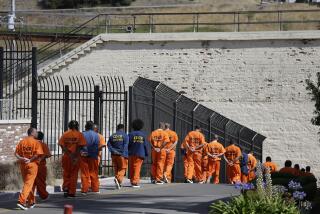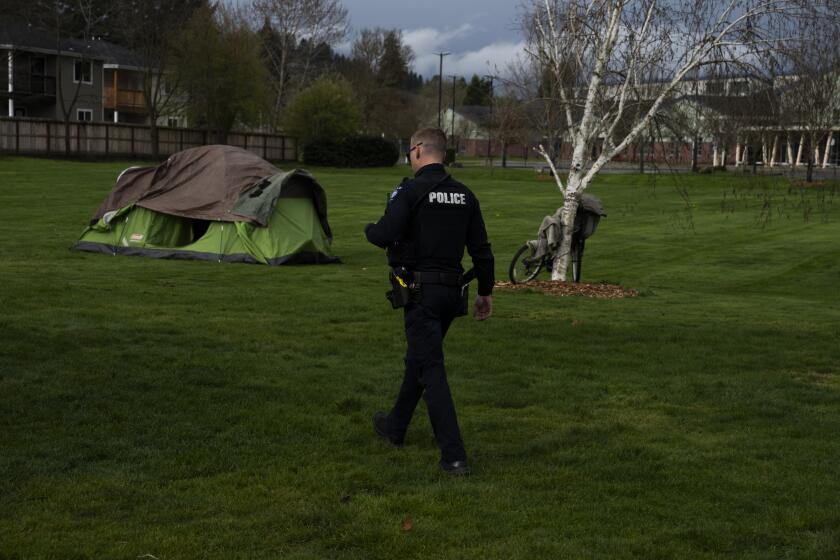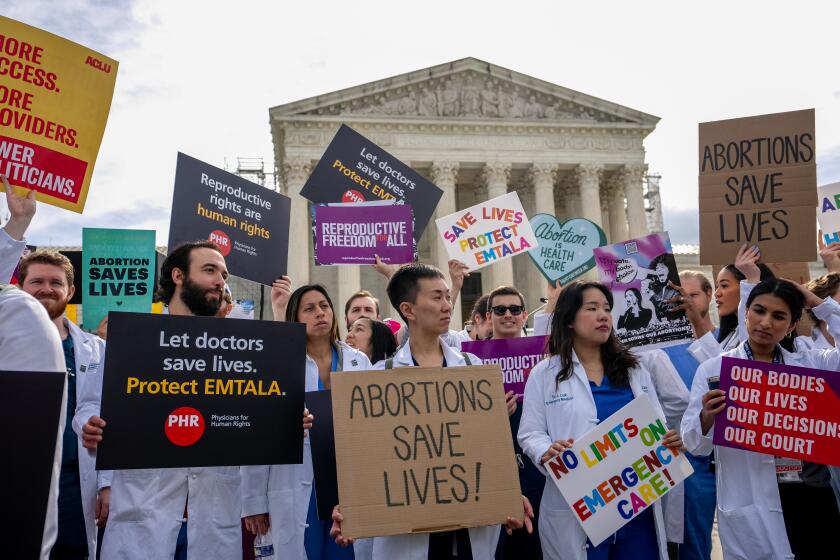A year after California’s criminal justice system realignment
“No Happy Anniversary for the Democrat Early Release Program,” reads a statement from the California state Senate Republican Caucus. I can understand why they’d be unhappy at the early release of Democrats, but I don’t think that’s what they mean. They’re referring instead to criminal justice realignment under last year’s AB 109. It took effect Oct. 1, 2011.
The narrative is familiar to anyone on the email list of police unions or California Republicans and it goes like this: Democrats adopted realignment, Gov. Jerry Brown signed it into law, inmates got out of prison early, and many of these people who should still be behind bars committed new crimes, including rape, attempted murder, kidnapping and robbery.
Ten of the Senate’s 13 Republicans offer their own comments as part of their caucus’ official statement. Former GOP leader Bob Dutton, of Rancho Cucamonga, refers to “letting dangerous criminals out of prison early.” Ted Gaines of Rocklin, near Sacramento, says realignment “essentially means the early release of some very dangerous individuals.” Tony Strickland of Thousand Oaks talks about “hundreds of offenders released early.” Mimi Walters of Irvine mentions “early release of many dangerous criminals.”
There are links to news stories that detail crimes allegedly committed by felons who got out of prison early because of realignment.
It sure sounds like they’re saying realignment lets felons out of prison early, right? How can Dutton’s statement, for example, be interpreted as saying anything else? How can the caucus’ collective statement about “the Democrats’ early-release program for prison inmates” mean anything else?
The problem with this narrative is pretty basic. Under AB 109 realignment, no one is released from prison any earlier than he or she would have been otherwise.
Before realignment, a felon was sentenced to prison for, say, 10 years, and after five – 50% of time served – was released on parole. The 50% is a result of credit for good behavior and for work, and has been part of California law for years. Realignment hasn’t changed that.
After realignment, that same person serves the same 50% of sentence and is then released to post-release community supervision, which is basically parole – although instead of reporting to state parole officers they report to county probation officers. In both cases, the felon comes back to his or her home community. The neighbors may not want that felon back, but no one can honestly claim that more of them are moving from prison to their old neighborhoods than they did before realignment, or at any faster a clip.
There are indeed legitimate concerns about realignment. Are county probation departments equipped to handle the ex-inmates who formerly would have reported to parole officers? The 58 counties are still honing their procedures and comparing notes. Meanwhile, many new felons – those convicted of non-serious, non-violent and non-sex crimes – are being housed in county jails instead of state prison. Some, perhaps many, of them may have a rap sheet that includes serious crimes. Are they being let out early from county jails, perhaps because of local overcrowding or mismanagement of the jails by county sheriffs?
“Yeah, that’s it,” say the critics of realignment. “That’s the ticket. See, when we said that AB 109 releases felons from prison early, what we were really saying is that it may as well release inmates from prison early, because some new felons are going to jail instead of prison, and the jails are releasing them early. Or maybe they’re not being released from jail early but jails are releasing other folks to make room for the new felons, and maybe the other folks are committing the crimes. Yeah, that’s what we meant.”
It should be pretty easy to be able to document whether new felons are being released early from local jails, and if so whether they are committing new crimes. But police groups, the state GOP and others who criticize realignment and have a knack for citing anecdotes never quite seem to be able to find those numbers. At least a third of the state’s new so-called non-non-nons have been sentenced in Los Angeles County Superior Court and have gone to Los Angeles County jail. According to the Sheriff’s Department, not one such person has been released from jail early. The department also reports that it has not changed its early release criteria. Yes, the sheriff has long released inmates early in order to manage crowding and keep beds available, but it has not sped up releases to make room for the newly convicted felons.
How about the parolee, or rather, the post-release-community-supervisee, who violates the conditions of his release? It’s true that under realignment that person does not go to a parole revocation hearing and then back to state prison, but goes instead to an analogous county hearing – in Los Angeles it’s conducted under the auspices of the court – and then if necessary, to county jail. Are those the people being released early and committing new crimes? In Los Angeles there have been only a handful of such re-commitments.
But perhaps other counties are releasing them early? Perhaps. When confronted with the facts, several elected officials and candidates who have tried to attribute crime spikes in Los Angeles to early prison releases or L.A. jail releases have quickly switched gears and said that the crime may be caused by people unwisely let go by jails in distant counties who left home and traveled here to rob and steal.
It’s possible. Although, again, it’s not documented. Each sheriff in each county has the power and the duty to prioritize inmates so that dangerous people are kept behind bars, and others – for example those awaiting trial for non-serious crimes – are released with ankle bracelets or other alternative means of oversight.
Besides, the appropriate question is not merely whether anyone on post-release community supervision has committed a crime, but whether they are committing crimes at a greater rate than pre-realignment parolees were. And it’s undeniable that parolees were a problem. About seven in 10 recidivated, which means they were sent back to prison (although there’s some dispute over how many of those went back because they committed new crimes or because they violated technical terms of their parole). If 70% of realignment-era supervisees are violating their terms or committing new crimes, that’s obviously no mark of success for realignment. But it’s also not evidence of failure. It’s just status quo. We’re still failing at the same rate, with the same number of dangerous people as before returning to our neighborhoods.
So why all these confident assertions from the GOP state Senate Caucus and others that realignment has resulted in the early release of dangerous people from state prison? I see two possibilities:
- They don’t really mean what they say. They have a legitimate concern about some of the nuts and bolts of realignment, but rather than question the readiness of probation departments or the competence of sheriffs, they find it easier to fudge the facts and say inmates are being released early from state prison when they know for a fact they are not. Maybe “early release program for prison inmates” is shorthand or code for no early release for prison inmates, but also an expression of some concern about adequacy of the new type of post-release supervision. If that’s the case, though, it’s pretty irresponsible to falsely assert to their constituents that prisons are letting felons out early – especially given the fact that realignment was an alternative to letting felons out early. Or:
- They have no idea what they’re talking about.
More to Read
A cure for the common opinion
Get thought-provoking perspectives with our weekly newsletter.
You may occasionally receive promotional content from the Los Angeles Times.






